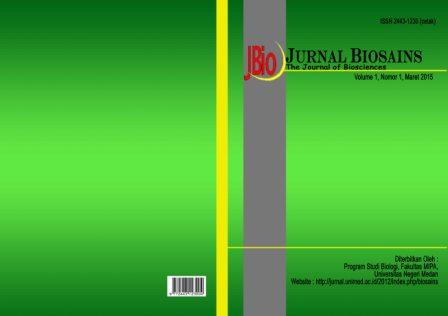PEMANFAATAN MIKROORGANISME DALAM BIOREMEDIASI SENYAWA PENCEMAR
DOI:
https://doi.org/10.24114/jbio.v1i1.5228Abstract
Bioremediation is a process that involves living creatures in the remediation or degradation of pollutant compounds. The ability of living creatures is demonstrated by the activity of plants and microorganisms. Microorganisms have potential as bioremediation agents. The ability of bioremediation by microorganisms turned out to be done enzymatically involving enzyme activities of some types of microorganisms that work together to overhaul chains pollutant substances into compounds that are better for the environment. These enzymes, among others, oksireduktase, oxygenation, lipase and cellulase. Bioremediation process requires a long time, due to the need for the process of adaptation in a given environment. Key words. Bioremediation, Microorganisms, Enzyme, DegradationDownloads
Published
Issue
Section
License
For Authors Jurnal Biosains agree to the following terms:
Authors retain copyright and grant the Jurnal Biosains (JBIO) right of first publication with the work simultaneously licensed under a Creative Commons Attribution License (CC BY-SA 4.0) that allows others to share (copy and redistribute the material in any medium or format) and adapt (remix, transform, and build upon the material) the work for any purpose, even commercially with an acknowledgement of the work's authorship and initial publication in JBIO (Jurnal Biosains)
Authors are able to enter into separate, additional contractual arrangements for the non-exclusive distribution of the journal's published version of the work (e.g., post it to an institutional repository or publish it in a book), with an acknowledgement of its initial publication in JBIO (Jurnal Biosains)
Authors are permitted and encouraged to post their work online (e.g., in institutional repositories or on their website) prior to and during the submission process, as it can lead to productive exchanges, as well as earlier and greater citation of published work (See The Effect of Open Access).


